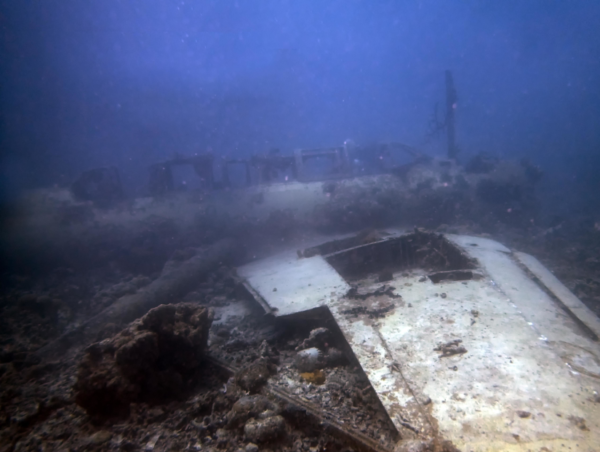In 1969, renowned French oceanographer Jacques Cousteau explored a sheltered body of water in the Central Pacific with a fascinating history. What he found beneath the crystal waters would bring adventurers and treasure seekers from all over the world to this isolated lagoon.
Approximately a thousand miles north east of New Guinea, Truk Lagoon (also known as Chuuk) is found within the Federated States of Micronesia and consists of a protected reef some 140 miles around, with a natural harbour.
In World War II, Truk Lagoon was the Empire of Japan’s main base in the South Pacific, with a heavily fortified headquarters on the island of Truk itself that had come to be known by the Allied forces as the ‘Gibraltar of the Pacific’.

In 1944, the naval base was destroyed during Operation Hailstone, which lasted for three days as American planes relentlessly bombed the unsuspecting Japanese fleet. In those three days, twelve warships and thirty-two merchant vessels were sunk, along with 275 aircraft. The Japanese submarine I-169 Shinohara was also lost, having taken part in the battle of Pearl Harbor just three years previous.
When Cousteau dived into the now-serene depths of the lagoon over two decades later, he discovered the world’s largest ship graveyard. Following his documentary broadcast in 1971, Truk Lagoon became a popular destination for scuba divers and explorers alike, who all wanted to experience the ghostly remains for themselves.
Less than fifteen metres below the calm surface, the well-preserved remnants of the Japanese fleet were found to contain aircraft, tanks, bulldozers, railroad cars, motorcycles, torpedoes, mines, bombs, radios, plus thousands of other weapons and artifacts. Disturbingly, the remains of their crews were also discovered below deck, their watery graves disturbed for the first time in three decades.
The coral-encrusted wrecks became home to a fantastic array of marine life, including such shy creatures as turtles, sharks and manta rays. In 2007, 266 different species of reef fish were identified amongst the slowly-decaying ships, as well as the very rare coral Acropora pichoni.
The tourism trade around Truk Lagoon is now the nearby island’s main industry, continuing to offer scuba diving excursions in and around the many wrecks. However, there have been calls from various sources for the lagoon to be ‘cleaned up’ due to the amount of oil that was leaking from the ship carcasses into the coral reef. Others have noted though that the Japanese fleet was not carrying much fuel due to difficult times during the war. The research into possible pollution within the lagoon continues to this day with the help of the Japanese government.

As we hurtle towards 2019, Truk Lagoon remains a popular destination for many thrill-seekers. Those who visited just after Cousteau’s discovery were able to take smaller artefacts away from their dives, but the ships and their contents are now classified as a Japanese war grave and as such, it is illegal to remove any part of them. There is also an operation underway by the Japanese government to retrieve all items of worth, whilst ensuring there is no contamination of the otherwise pristine waters.
Needless to say, Truk Lagoon is now a location that provokes mixed feelings amongst its visitors. A paradise with its own amazing ecosystem that takes the breath away, and yet, just below the surface, haunting images of war and lost lives that are both intriguing and tragic in equal measure.







